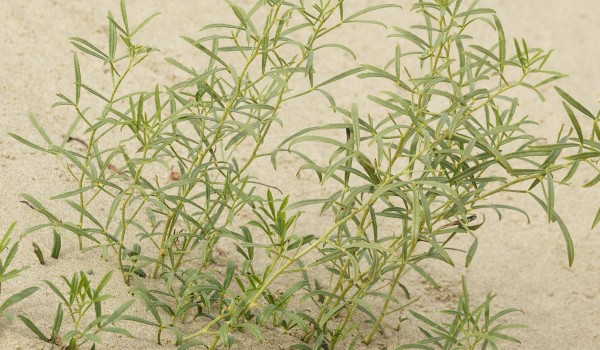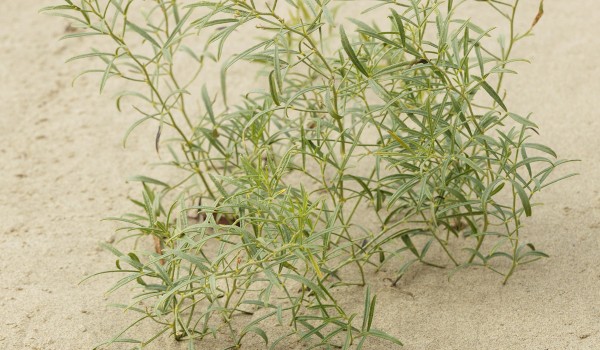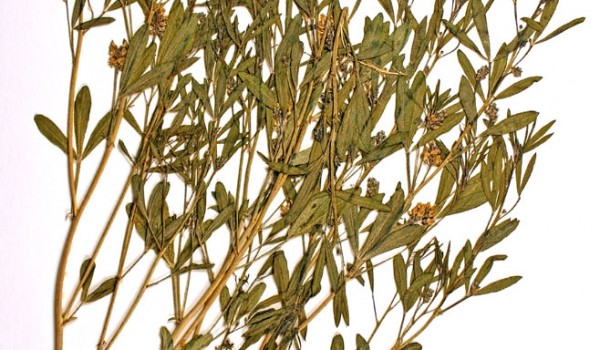Legume (Fabaceae)
Lance-leaved Psoralea
Psoraliadium lanceolatum (Pursh) Rydb.This prairie perennial has white and purple pea-like flowers that are pollinated by visiting moths, including the rare Dusky Dune Moth. Plants can be found in the Mixed Grass prairies of Saskatchewan and Alberta where they grow on sandy soils and sand dunes. Their long rhizomes help them to colonize the unstable surfaces of dunes. Seeds of this species are eaten by the rare Ord’s Kangaroo Rat and can be found in their caches. Indigenous people have used these plants for medicinal purposes, and the roots are useful for making string.
Flower Colour:
- White
Flowering Season:
- Summer
Flowering Months:
- July
- June
Canadian Rarity Status:
Not rare.
Physical Appearance:
The semi-erect, hairy stems grow 10 to 50 cm tall, and are dotted with glands. Leaves are alternate and palmately divided into three linear to lance shaped leaflets, with hairy undersides and noticeable glands. Flowers are arranged in a dense spike. Each one has one upper banner petal, two wings and two smaller fused petals (keel) tipped with purple. Fruits are hairy, glandular, capsules.
Similar Species:
Breadroot (Pediomelum esculentum (Pursh) Rydb.), Silverleaf Psoralea
Gardening Notes:
Seeds and/or plants may be available from greenhouses and seed supply companies specializing in native plants.
Canadian Distribution:
- Alberta
- Saskatchewan
Prairie Types:
- Mixed Grass Prairie
Habitats:
- Prairies
- Sand dunes
- Sandstone Outcrops
- Savannahs
- Streambanks
Moisture Conditions:
- Dry
- Moderate
Light Preference:
- Full Sun
Soil Preference:
- Sand









 Owlet Moths (
Owlet Moths (